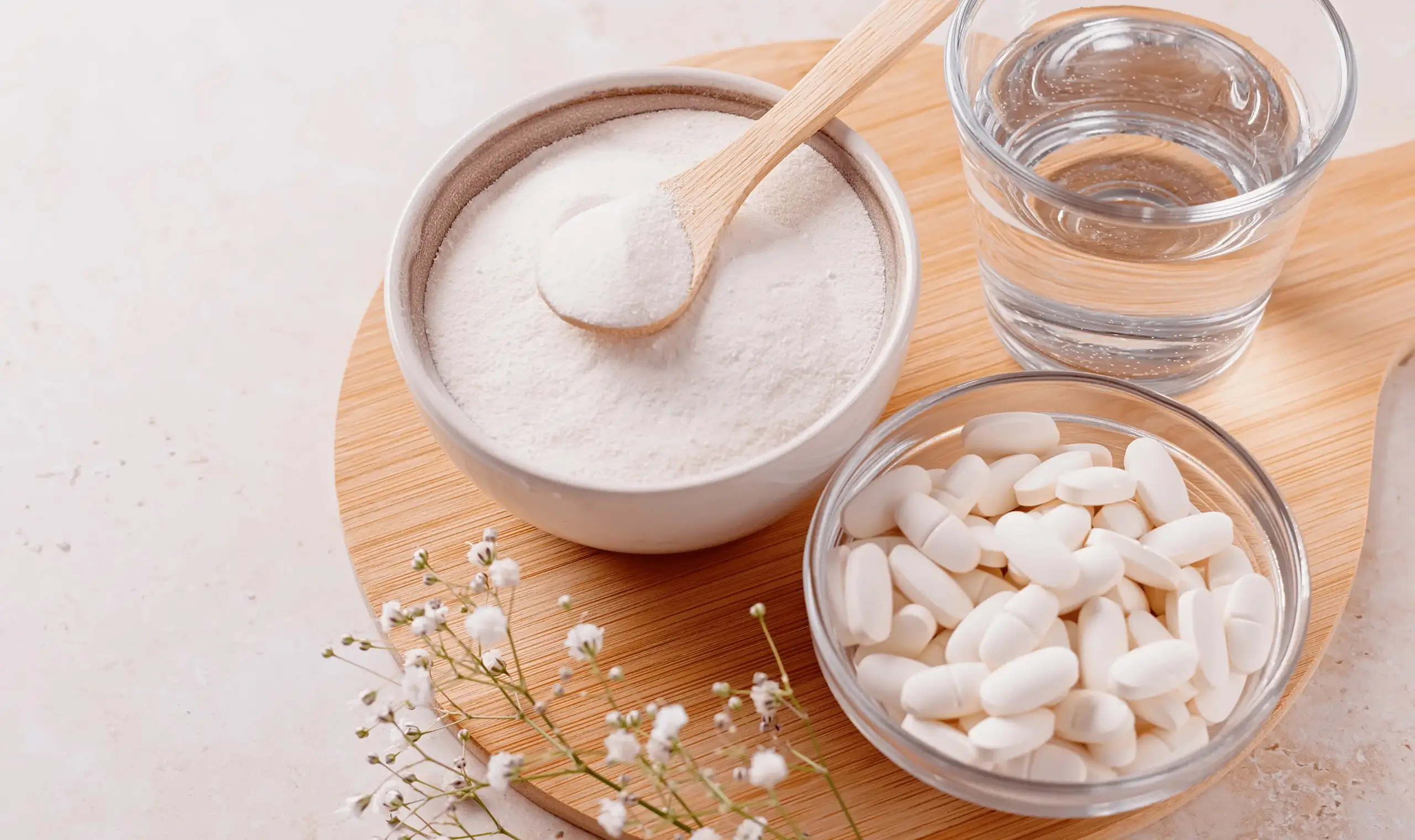Collagen is no longer a trend; it’s a foundational category in the wellness industry. For product formulators, the question is no longer if they should use collagen, but which collagen they should use. The two dominant sources on the market—bovine and marine—each offer a distinct set of properties, and the choice between them is a critical strategic decision.
This guide moves beyond consumer-level talking points to provide a technical breakdown for formulators, comparing bovine vs. marine collagen based on their composition, functionality, and ideal applications.
The fundamental difference: source and collagen types
The primary distinction comes from the raw material source, which in turn dictates the primary collagen types present.
- Bovine Collagen: Sourced from the hides of cattle, it is a rich source of both Type I and Type III collagen.
- Marine (Fish) Collagen: Sourced primarily from the skin and scales of fish, it consists almost exclusively of Type I collagen.
This difference is significant. Type I collagen is the most abundant protein in the human body, forming the building blocks of skin, hair, nails, and bones. Type III collagen is the second most abundant, found alongside Type I in skin and also crucial for arterial walls and internal organs. As extensive scientific reviews in journals like Marine Drugs have detailed, the biological activities of collagen peptides are closely linked to their source and composition.
A technical comparison for formulators
Here is a head-to-head comparison of the attributes that matter most in product development when considering bovine vs. marine collagen.
| Feature | Bovine Collagen | Marine Collagen |
|---|---|---|
| Primary Types | Type I & III | Primarily Type I |
| Amino Acid Profile | Higher in Glycine and Proline | Higher in Hydroxyproline |
| Application Focus | Joint health, general wellness, skin structure | “Beauty from within” (skin, hair), premium formulas |
| Sensory Profile | Generally neutral, can have slight notes | Extremely neutral, very low odor/taste profile |
| Consumer Appeal | “Grass-fed” claims, widely accepted | Pescatarian-friendly, “wild-caught” claims |
| Cost-in-Use | More economical | Premium, higher cost |
Application guide: when to choose each source
The optimal choice depends on your product’s target market, formulation goals, and price point.
Choose Bovine Collagen for:
- Joint and Connective Tissue Formulas: The presence of Type III collagen, combined with Type I, makes it an excellent, robust choice for products targeting joint health, recovery, and active aging.
- Cost-Effective, General Wellness Products: Its economic advantage and balanced profile make it the go-to for foundational collagen powders and functional foods.
- Dairy Mixes and Coffee Creamers: Its profile blends well into richer flavor systems where absolute neutrality isn’t the primary concern.
Choose Marine Collagen for:
- Premium “Beauty from Within” Supplements: Its exclusive focus on Type I collagen and reputation for high bioavailability make it the gold standard for high-end nutricosmetics targeting skin elasticity and hydration.
- Pescatarian or Halal-Certified Products: It meets the dietary requirements that bovine sources cannot.
- Delicate Flavor Systems: Its exceptionally clean and neutral sensory profile is essential for products with subtle flavors, such as fruit-infused waters or light beverages.
The supplier’s role in quality and consistency
Regardless of the source, the efficacy of collagen depends on consistent hydrolysis and a clean, reliable supply chain. Sensory profiles, solubility, and purity can vary significantly between suppliers.
At Nutri Partners, we supply both high-quality hydrolyzed bovine and marine collagen. We provide full transparency with a Certificate of Analysis (CoA) for every batch, allowing our partners to make an informed, strategic choice between bovine vs. marine collagen based on the specific needs of their project.

